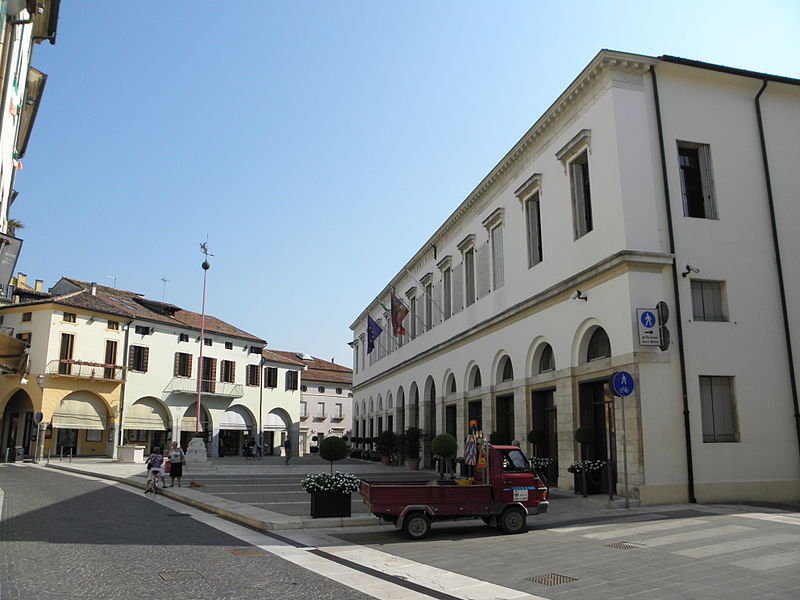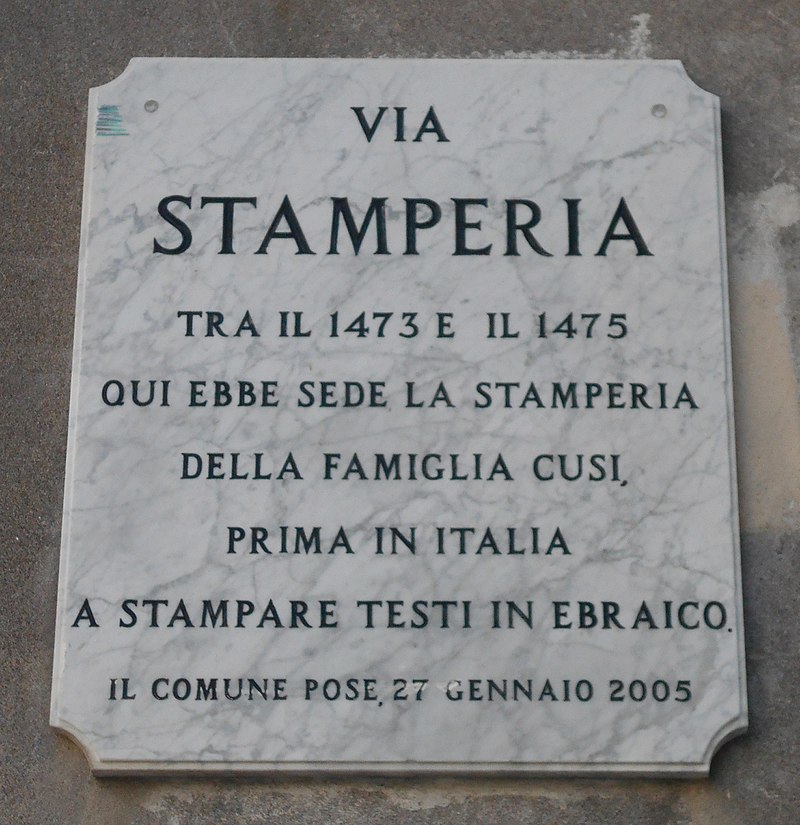
Piove di Sacco was built in Roman times and fortified in the Middle Ages. The Jewish presence is attested by documents dated from the end of the 14th century. They concern the arrival of Jews who were involved in banking, which was often the only activity permitted for them at the time.
This did not prevent them from pursuing other interests, such as Moshe ben Samuel, a banker and scribe who worked on Maimonides’ work. A passion for writing shared by many of his fellow citizens. Like Meshulam Cusi, a rabbi who lived in Este from 1468 to 1474 and who had set up a printing house in Veneto. In particular, he published books of Slikhot and above all the second book published in Hebrew in Italy, Arbaa Tourim by Jacob ben Asher, which is now in the Civic Library of Padua.

This activity made Piove di Sacco the main place for printing Hebrew texts, until it was dethroned by Venice in the 16th century.
Other rare works can be found today in the University Library of Turin and the National Library of Madrid. It was in the Stradella della Stamperia that this printing house, one of the oldest in Europe, seemed to be located.
Proof of the integration of the Jews, who came out of the ghettos in the 19th century, some of them were elected to parliament. Isacco Vita Morpurgo in 1864 as a town councillor. Leone Romanin Jacur was elected to parliament eleven times.
Sources : Veneto Jewish Itineraries by Francesca Brandes and Encyclopaedia Judaica